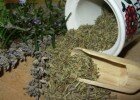Mold Illness: What It Is and How You Know if You Have It
Mold. You may not be able to see or smell it, yet it may be growing in your home and the reason you feel sick. Mold poisoning may be impacting your health. How do you know? In this blog, I want to cover mold illness and who is susceptible. In future blogs, I’ll cover what to do about it.
Most likely your regular doctor won’t be much help. Conventional medicine doesn’t really believe that mold exposure is a problem. Plus it can be difficult to diagnose someone with mold toxicity; it can mimic many other conditions and symptoms are nonspecific.
Symptoms of Mold Illness
- Memory problems, brain fog, trouble with focus and executive function
- Fatigue, weakness, post-exercise malaise and fatigue
- Muscle cramping, aches and pains, joint pain without inflammatory arthritis, persistent nerve pain, “ice pick” pain
- Numbness and tingling
- Headache
- Light sensitivity, red eyes, and/or blurred vision
- Sinus problems, cough, shortness of breath, air hunger, asthma-like symptoms
- Tremors
- Vertigo
- Persistent nerve pain
- Abdominal pain, nausea, diarrhea, appetite changes
- Metallic taste
- Weight gain despite sufficient effort (weight loss resistance)
- Night sweats or other problems with temperature regulation
- Excessive thirst
- Increased urination
- Static “shocks”
See how easily mold poisoning could go unnoticed, or mistaken for other conditions? Yet 30 years of good scientific evidence points to the serious health problem that mold can cause.
The low-down on mold
Mold is a multiple type of fungi which is growing in filaments. They reproduce by forming very small spores which sprout and fly away. Places where mold grows are damp, warm, and humid, inside and outside. Even if the place where you live is dry, there can appear mold if water leaks somewhere, or if there are poorly ventilated bathrooms, or even floods. It can grow anywhere, attaching your shoes, pets, clothes, carpets, books, furniture, and papers. It can ciruclate in the air system, especially if you do not change the filters.
Water-damaged places create a mixture of contaminants which are present in the air and dust, resulting into a toxic chemical stew. It produces toxic chemicalsnamed mycotoxins that appear in the spores and fragments of mold into the air.
No toxin from the mold is reponsible for all mold illnesses, but the cause is the water-damaged area itself. A recent reviewconnected sinuses as a common source of ongoing mold illnesses.
Why is mold a problem?
Toxicity caused by mold falls under the greater category of biotoxin illnesses which are familiar by the name Chronic Inflammatory Response Syndrome, or CIRS. According to the author of Life in the Era of Dangerous Buildings, Ritchie Shoemaker, MD, CIRS is a chronic and acute, systematic inflammatory responsewhich is gained through the exposure of water-damaged buildings that have resident toxigenic organisms that include fungi, bacteria, actinomycetes, mycobacterium, and inflammagens. 24% of people are unable to create adequate antibody response and those are that comprise 95% of people that have illnesses which contribute from water-damaged buildings.
Those 24% of people have a certain immune response gene (HLA-DR), thus if you are among those who have mold susceptible genes, then you are likely to have an adverse reaction to mold whne you are exposed to a sufficient quantity of mold. 95% of the mold illnesses occurs in this subgroup, but there are 2% of people who are susceptible to it, but with a “sticker quicker” variation of the genes. If you are not susceptible, your chances are lower, but are not zero.
Those people who are genetically susceptible to mold are not able to recognize s[ecific toxins as toxins, mold including, thus the mold (toxin) recirculates in their bodies, triggering inflammatory response. Most of them are unaware that they are genetically susceptible.
These illnesses are a serious issue. They do not belong to the group of allergies, but rather they represent a state of chronic inflammation which is caused when the immune system becomes out of whack. CIRS does not heal on its own, it will not abate, and will go on provoking illnesses unless it is properly treated. The illness is built upon DNA and when it is trigerred once, the inflammatory response and the symptoms will last for years.
How to diagnose CIRS?
These are the criteria that have to be met in order to make a diagnosis of CIRS:
– Any signs, symptoms, or history of biotoxin exposure. If the case is mold toxicity, history has to include toxin-producing mold exposure, and in other cases like ciguatera or mycrocystin, history needs to invlove exposure or lab evidence of exposure;
– Genetic predisposition to illnesses related to biotoxins based on the identification of an HLA susceptible haplotype;
– Any abnormalities that have been documented by the VCS testing;
– Biomakers that consist of neuroimmune, vascular, and endocrine abnormalities which characterize this disease. If there is a history of biotoxin exposure, a susceptible genotype, and an abnormal CVS test you will probably show lab abnormalities that are seen in CIRS.
We suggest you the following steps if you have issues with mold:
Step 1: You can start learning about illnesses connected to mold. Try Dr. Shoemaker’s book.
Step 2: Make a test of mold at your home. ERMI is one of the best tests. You can hire a profssional to do a visual inspection, or perform ERMI on your own for around $325. It is only helpful if it is positive. Better skip the testing, and hire a professional.
Step 3: You can work with trained person at a clinic to do a test performed by Labcorp, panel # 167120.
Source: www.hlfteam.com
-
Shannon





